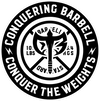Mike Mentzer, a renowned bodybuilder and fitness icon, is best known for his groundbreaking approach to training known as High-Intensity Training (HIT). In the 1970s, Mentzer revolutionized the bodybuilding world with his minimalist and highly efficient workout routines, challenging the traditional beliefs of high-volume training. His philosophy focused on maximizing muscle growth and strength through brief, intense, and infrequent workouts. In this article, we will delve into the principles and components of the Mike Mentzer workout routine and its lasting impact on the fitness industry.
The foundation of Mike Mentzer's workout routine is the concept of intensity. He believed that intensity, not volume, was the key to triggering optimal muscle growth and strength gains. Rather than spending hours in the gym, Mentzer emphasized short but incredibly intense training sessions that stimulated muscle growth and allowed for optimal recovery.
One of the central tenets of the Mike Mentzer workout routine is the notion of training to momentary muscular failure. This means pushing each set to the point where it is physically impossible to perform another repetition with proper form. By training to failure, Mentzer argued that the muscle fibers were thoroughly stimulated, leading to optimal muscle growth and development.
Mentzer also emphasized the importance of utilizing heavy weights and employing slow, controlled repetitions. This deliberate approach to lifting allowed for better muscle contraction and greater time under tension, maximizing the stimulus for muscle growth.
The Mike Mentzer workout routine typically consists of a three-day split, focusing on different muscle groups on each training day. Here's a breakdown of a classic Mentzer workout routine:
Day 1: Chest and Back
- Barbell bench press: 1 set of 6-8 reps
- Incline dumbbell press: 1 set of 6-8 reps
- Bent-over barbell rows: 1 set of 6-8 reps
- Pull-ups or lat pulldowns: 1 set of 6-8 reps
Day 2: Legs and Abs
- Squats: 1 set of 6-8 reps
- Leg curls or stiff-legged deadlifts: 1 set of 6-8 reps
- Seated calf raises: 1 set of 6-8 reps
- Hanging leg raises: 1 set of 6-8 reps
Day 3: Shoulders and Arms
- Overhead press or dumbbell shoulder press: 1 set of 6-8 reps
- Barbell curls: 1 set of 6-8 reps
- Close-grip bench press: 1 set of 6-8 reps
- Dips or tricep pushdowns: 1 set of 6-8 reps
The training frequency for the Mike Mentzer workout routine is typically three days per week, with at least one day of rest between each training day. Mentzer believed that this infrequent training schedule allowed for adequate recovery and muscle growth, maximizing the benefits of each workout.
In addition to his unique training approach, Mike Mentzer also emphasized the importance of proper nutrition and recovery. He advocated for a high-protein diet to support muscle repair and growth and stressed the significance of adequate rest and sleep for optimal recovery.
The Mike Mentzer workout routine garnered both praise and criticism within the bodybuilding community. While many athletes and fitness enthusiasts appreciated the efficiency and results of HIT, some argued that the low-volume approach might not be suitable for everyone and that individual factors, such as genetics and training experience, play a significant role in determining training effectiveness.
Regardless of the controversy surrounding his methods, there is no denying the impact Mike Mentzer had on the fitness world. He challenged conventional training wisdom and inspired countless individuals to reevaluate their approach to exercise and embrace the principles of intensity and efficiency.
In conclusion, the Mike Mentzer workout routine remains a revolutionary approach to strength training and muscle development. His philosophy of High-Intensity Training, focusing on brief, intense, and infrequent workouts, has inspired many athletes to maximize their potential and achieve remarkable results. While HIT may not be suitable for everyone, it serves as a reminder that training efficiency and intensity are vital components of any successful fitness regimen. As with any training program, individual goals, experience, and preferences should be considered when choosing the best workout routine for optimal results.
All information presented and written within conqueringbarbell.co are intended for informational purposes only. You should not rely on this information as a substitute for, nor does it replace, professional medical advice, diagnosis, or treatment. If you have any concerns or questions about your health, you should always consult with a physician or other health-care professional.













